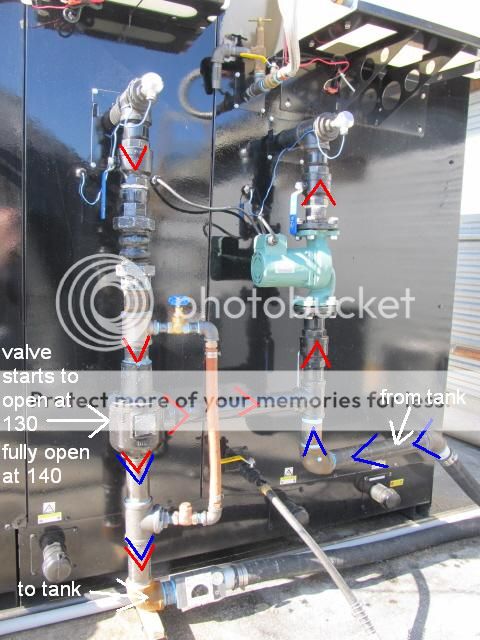Sorry if this topic is old and boring but I'm planning on some system modifications during the off heating season and have been unable to get clear answers from searching the archives. I have (nearly) one heating season under my belt with a Vigas 60kw and 1000 gallons pressurized storage in a small building 75 ft from house. For me, having the mess and smoke and and work flow for wood handling outside away from the house outweighed the advantages of inside placement. The house was built way before the boiler idea came along.
Anyways, here is the question: is there a three way thermostatic valve that will close the bypass arm as it opens the return allowing full flow? The valve I have now requires that the bypass arm be manually closed once the return is up to temp (140) or manually set the bypass valve partly open and leave it there which seems sub optimal. Mixing valves with motorized controls seem excessively complicated and expensive as do other previously posted systems with multiple pumps.
Anyways, here is the question: is there a three way thermostatic valve that will close the bypass arm as it opens the return allowing full flow? The valve I have now requires that the bypass arm be manually closed once the return is up to temp (140) or manually set the bypass valve partly open and leave it there which seems sub optimal. Mixing valves with motorized controls seem excessively complicated and expensive as do other previously posted systems with multiple pumps.


